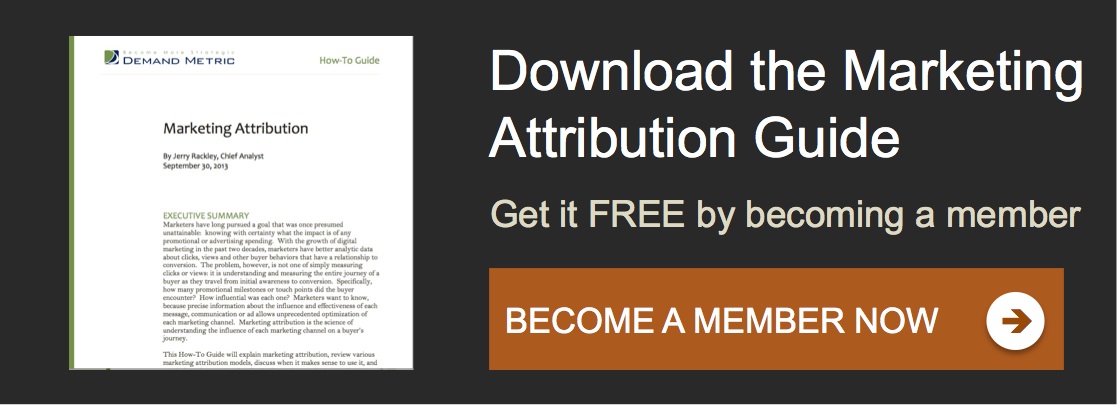Marketing Attribution Models
Conceptually, marketing attribution is not difficult to understand. The difficulty is implementing it accurately. Some sort of model is needed to implement marketing attribution. In theory, you would use an attribution model that traces the entire customer journey, accounting for both online and offline channels of influence in that path. Full customer path attribution represents the gold standard of models, and it’s a good goal. Getting there is probably an evolutionary process, particularly for firms that are just beginning to experiment with attribution.
A number of marketing attribution models exist, ranging from relatively simplistic to more comprehensive. Which model you choose depends on how your customers typically convert, your analytics acumen and a general willingness to invest in a marketing attribution effort. Here are descriptions of some of the common models:
- First click. Also known as first-touch, this model essentially credits the entire customer purchase or conversion to the first click, touch or encounter that customer had. For example, the first touch point in a customer buying journey gets 100% attribution for a conversion, even if other touch points may have influenced the customer along the way. If this customer journey is typically extremely short, this model may make sense. In situations where the customer journey is long, involving many other touch points, it makes little sense to attribute everything to the first touch or click. It may hold true that the first touch was the most influential, but if the customer’s path to conversion included other touch points, this model is not recommended.
- Last click. Similar to the first click model, except the attribution now goes entirely to the last touch point prior to conversion. The premise of this model is that the last touch point in the customer journey created the conversion, so it therefore gets 100% of the attribution, even if there were many touch points along the way. This model seems to make some sense and it has enjoyed much popularity. But is increasingly falling out of favor because it doesn’t account for any downstream influences that very likely factored in the conversion.
- Linear or Equality. Unlike the first click or last click models, the equality model acknowledges multiple touch points in the customer buying journey, assigning equal attribution to each one. For example, if a customer’s journey to conversion involved four different touch points, each one is assigned 25% attribution under this model. Equality is a good evolutionary step up from first or last click models, but it’s not without some flaws, the biggest of which is assuming that all touch points are equally effective and influential, which is rarely the case.
- Custom. A custom model is the best option, and the one that most closely approaches true customer path attribution. This model recognizes that each firm or solution has a unique customer path to conversion, and a model is built to provide precise attribution to all the touch points in that path. Implementing a custom model that attributes an accurate percentage for each touch point’s contribution requires more advanced analytics capability and the technology assistance of an attribution vendor. It’s a major improvement over the linear model, because it recognizes that not all touch points are equally influential. The greatest attribution is given to the touch points that have the greatest impact on the phases of the customer journey. If, for example, analytics show that the touch points in the discovery phase of the journey are most impactful, they might receive 60% of the attribution, with the remaining 40% divided in a similar manner across the awareness, consideration and decision phases of the buying process.
There are, of course, other attribution models, as well as variations on the ones described here, but these are the most frequently encountered.
To read the rest of this How-to Guide, become a Demand Metric member today!
Demand Metric’s How-To Guides are designed to provide practical, on-the-job training and education and provide context for using our premium tools & templates.


